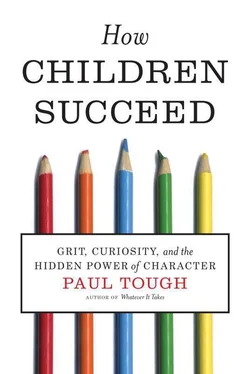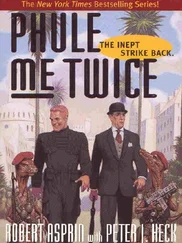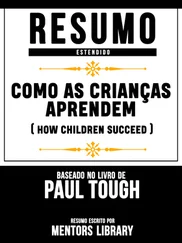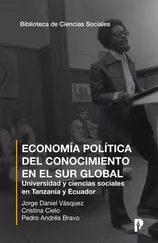When you hear stories about schools like Fenger, they are often told in the language of neglect: a school on the margins, students who have been forgotten and ignored by the bureaucrats downtown and in Washington. But the strange thing about Fenger High School is that it hasn’t been ignored. Not at all. Instead, over the course of the past two decades, it has been the focus of repeated ambitious and well-financed reforms by some of the most respected education officials and philanthropists in the country. Just about every strategy anyone has come up with for improving failing public high schools has been tried, in some form or another, at Fenger.
Fenger’s contemporary history begins in 1995, when Chicago’s mayor, Richard M. Daley, was granted control of the city’s schools by the Illinois state legislature. To reflect the businesslike approach he favored, Daley decided that the top official in the school system would no longer be called the superintendent; instead, he would be the CEO. For his first CEO, Daley selected his hard-charging budget director, Paul Vallas, who turned his attention immediately to improving Fenger and other underperforming city high schools. Vallas created a citywide evaluation system that ranked schools by how much help they needed, and he placed Fenger in the most dire category : probation. Vallas had been a student at Fenger for two years as a teenager, and perhaps that was why he focused his efforts so intently on the school. He introduced a restructuring plan for Fenger that included hiring an outside contractor to coach the school’s teachers in reading and writing instruction. He created a freshman academy at the school, a separate, dedicated floor where incoming students would get special attention for their entire freshman year. In 1999, he created a math-and-science academy at the school, complete with a $525,000 NASA-sponsored science lab. Two years later, he made Fenger a magnet school, specializing in technology.
Each of Vallas’s reform initiatives came and went, but things never seemed to improve much for the students at Fenger. And the same was true under Vallas’s successor, Arne Duncan. In 2006, Duncan chose Fenger as one of the pilot schools for a large-scale collaboration between the Chicago school system and the Bill and Melinda Gates Foundation, an undertaking called High School Transformation, which the foundation initially financed with a twenty-one-million-dollar grant. (After three years, the total bill for the citywide project had grown to eighty million.) When the initiative was announced, Duncan said it was “a truly historic day, not just for the Chicago Public Schools and the city, but for the country.” But a little more than two years later, with evidence mounting that High School Transformation wasn’t producing results, Fenger was switched over to Duncan’s latest reform initiative: High School Turnaround. Under Turnaround, a school’s principal and at least half its teachers were removed, and a whole new team was brought in. And when Turnaround arrived at Fenger, in 2009, the brand-new principal was Elizabeth Dozier.
Vallas and Duncan, it’s important to note, are not garden-variety school-system bureaucrats; they are two of the most celebrated educational leaders in the country. After Vallas left Chicago, he ran the schools in Philadelphia, and then he gained national fame as the man responsible for rebuilding and transforming the New Orleans school system after it was washed away by Hurricane Katrina. Duncan’s post-Chicago career is even more illustrious: President Obama chose him as his education secretary in 2009. But throughout all of the two men’s well-intentioned and often quite expensive reforms in Chicago, the grim statistics from Fenger High School stayed more or less where they had been in 1995: Between half and two-thirds of each incoming freshman class dropped out before the end of senior year. The minority of students who did make it to graduation were only rarely academically successful: in 2008, Duncan’s final year in Chicago, fewer than 4 percent of Fenger students met or exceeded standards on the statewide college-readiness tests given to juniors and seniors. During Duncan’s tenure, the school never once made “adequate yearly progress” under the federal No Child Left Behind law. And Vallas’s probation designation, originally intended to indicate a temporary state of emergency, became a fact of life at Fenger; in 2011, the school was placed on probation for the sixteenth year in a row.
When Dozier first arrived at Fenger, an ambitious and determined thirty-one-year-old, she believed that the basic tool kit of the modern education reformer contained everything she needed to turn things around for the school’s students. She had spent a year in a highly competitive principal-training program called New Leaders for New Schools, which emphasized to trainees that a dynamic leader could raise students’ achievement to high levels, no matter what their socioeconomic circumstances, as long as she had a committed staff. Dozier cleaned house at Fenger, replacing several administrators and most of the teachers; when I first sat down with her in her office at Fenger, a little more than a year after she took the job, her seventy-member staff included only three teachers from the school’s pre-Turnaround days. Most of the new teachers were young, ambitious, and non-tenured, which meant they would be relatively easy for Dozier to replace if they didn’t measure up to her standards.
When we spoke, though, Dozier said that her thinking about schools had been changed by her time at Fenger. “I used to always think that if a school wasn’t performing, that it was strictly because there was a bad principal, or there were bad teachers,” she explained. “But the reality is that at Fenger, we’re a neighborhood school, so we’re just a reflection of the community. And you can’t expect to solve the problems of a school without taking into account what’s happening in the community.”
As Dozier got to know the students at Fenger, she found herself repeatedly taken aback by the severity of the problems they faced at home. “The majority of our students are living in poverty, from check to check,” she told me. “A lot of them live in neighborhoods with gang problems. I can’t think of a single kid at the school who doesn’t face some kind of serious adversity.” A quarter of the female students were either pregnant or already teenage mothers, she said. And when I asked her to estimate how many of her students lived with both biological parents, a quizzical look came over her face. “I can’t think of one,” she replied. “But I know we have them.”
The threat of violence seemed always to be looming over Fenger’s students as well. Chicago’s murder rate is twice as high as the rate in Los Angeles and more than double the rate in New York City. Gangs have a bigger and more lethal presence in Chicago than in any other major American city, and when Dozier came to Fenger, there had been a recent spike in gun violence among young people: in 2008, eighty-three school-age teenagers were murdered in the city, and more than six hundred were shot but survived.
Though Dozier had been expecting the turnaround of Fenger to be a challenge, nothing prepared her for what happened on her sixteenth day on the job. A major fight broke out a few blocks from the school, involving maybe fifty teenagers, mostly Fenger students. There were no guns or knives, but some kids picked up railroad ties and started using them as clubs. A sixteen-year-old Fenger student named Derrion Albert who had waded into the fight was hit on the head with a railroad tie and then punched in the face and knocked unconscious. While he was on the ground, a few other young men kicked him in the head, and the combined blunt-force trauma killed him.
Читать дальше



![Коринн МакКей - How to Succeed as a Freelance Translator [calibre 3.46.0]](/books/402693/korinn-makkej-how-to-succeed-as-a-freelance-transl-thumb.webp)








